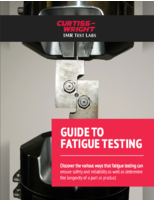Electrical Sensors / Detectors / Transducers
Current Sensing Switch helps keep motors performing optimally.
Press Release Summary:

Compatible with any automation system, ASM Series Smart-Switch uses actual load current to set trip point. Self-calibrating and self-powered switches accelerate start-up and come in 3 models to provide status monitoring, overload or underload, or operating window (overload and underload) functionality. Selection accommodates needs of particular pump, fan, heating element, conveyor, or multi-load safety-interlocked application. Output contact is AC and DC compatible.
Original Press Release:
Simplify Current Load Monitoring and Help Keep Motors Performing Optimally with ASM Smart Switch from NK Technologies
New self-calibrating and self-powered Smart-Switch eliminates the need to manually adjust the sensor trip point, and is compatible with any automation system
SAN JOSE, CA - NK Technologies introduces the newly re-designed ASM Series Smart-Switch. These self-calibrating switches use the actual load current to set the trip point and provide the simplest way to ensure that a motor is working properly. These current sensing Smart-Switches are self-powered and self-calibrating to speed start-up and minimize installation costs. Three models are available to provide status monitoring, overload or underload, or operating window (overload and underload) functionality to suit particular pump, fan, heating element, conveyor or multi-load safety-interlocked application needs. The output contact is AC and DC compatible for use with any automation system.
"In many applications adjusting the trip point of a current monitoring sensor can be frustrating. The control cabinet must be open while power is on so that the load being monitored is energized and the tight space makes getting a small screwdriver in the right position challenging. An ASM Self Calibrating Smart-Switch solves this problem by using the actual load current to set the trip point," says Philip Gregory, President, NK Technologies. "With the ASM series the sensor automatically locks onto the normal current level and self-learns and establishes a limit-alarm trip point to help users take corrective action before a failure occurs. Eliminating the need to manually adjust sensor trip points also improves safety and helps with NFPA 70E compliance by keeping screwdrivers out of an energized control panel."
The ASM sensor slides or snaps over one conductor feeding the load. The contact controls the input voltage, AC or DC, to 135 volts to a controller or small relay. It takes just a couple of seconds of steady running conditions before the sensor locks onto the normal current level. If the load draws more current than normal or the current drops significantly, the sensor output will open. If the current falls below 85% of normal or increases above 125% of normal the contact will open, with no manually setting trip points and no adjustments needed unless a motor is replaced. Should a motor be replaced calibration is very easy, and within a matter of minutes the system is back in operation.
Test and evaluation units are available to OEMs at no cost. Visit the Engineering Resources section of NK Technologies website for access to numerous application notes, and a technology white paper on current sensing technology.
ABOUT NK TECHNOLOGIES
Founded in 1982, NK Technologies designed the first the low-cost solid-state current sensing technology that underlies the industry today.
Today NK Technologies is a leading provider of current sensing, ground fault detection and power monitoring products to the industrial and factory automation markets, with a product portfolio that includes more than 1300 models to satisfy a wide range of specific application needs. As the needs of these markets change, NK Technologies is well-positioned to respond with sophisticated new product designs and improved product functionality necessary to meet those applications.
NK Technologies, 3511 Charter Park Drive, San Jose, CA 95136; 800.959.4014; fax: 408.871.7515 sales@nktechnologies.com; www.nktechnologies.com.




